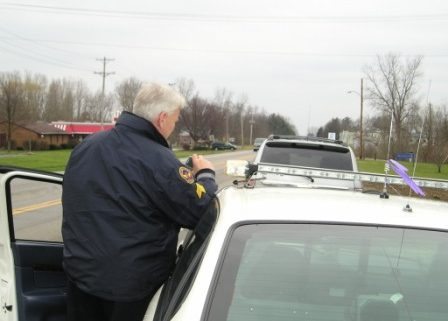Hands Kill: Traffic Stops
Television, film, and the media often skew the reality of police work. Sometimes they alter the public’s perception so badly that people can no longer separate fiction from fact. But there are times when those entertainment sources (yes, some media is entertainment, not news) actually help the police. Such as…
Driver’s Side or Passenger Side? Television and film has provided patrol officers with an excellent means of tactical surprise, the Passenger’s Side Approach. Most TV cops approach stopped vehicles from the driver’s side, and that’s what the general TV-viewing public expects.
Sooo…when a real-life cop approaches the passenger side of a vehicle, most drivers and passengers are totally clueless about the officer who’s standing at the passenger window watching while they’re busy hiding their dope and other illegal goodies beneath the front seat. The officer also has a good view of the occupants’ hands and what they may be holding, such as a gun. And, since most people are right-handed, a passenger-side approach makes it a bit more difficult for someone to shoot an officer who’s standing to the right of the vehicle. Not impossible, just awkward.
Believe me, traffic stops are especially scary to police officers because they have no idea what’s waiting for them inside the cars they’ve stopped. Therefore, any advantage, even slight ones, are a huge plus.
Inside or Outside When Making the Arrest? When officers prepare to make an arrest subsequent to, or during a traffic stop, we sometimes see scenarios where officers ask vehicle occupants to remain inside their cars, while at other times officers order them outside. Which is best? Well, as always, my answer is…it depends, and we see both on TV. But which is best in the real world?
Well, the first priority in any situation is the officer’s safety. Of course the suspect’s safety is also a concern, but in this world, a world where fighting with law enforcement seems to be a popular sport, officers must look out for number one…themselves. Therefore, an officer’s safety comes first. ALWAYS.
Officers should order the occupants to show their hands and keep them where they can see them at all times. *One of the top rules of officer survival is—HANDS KILL!
Keeping the suspect(s) in the car means there’s less chance the suspect can get away on foot and/or fight with the officer. However, to prevent escape in the vehicle it is extremely important that the officer gain control of the driver’s keys. So they’ll have the driver shut down the engine, remove the keys, and hand them to them. In other situations officers may order the driver to drop the keys outside the car window. But the latter is for a different situation and for another blog post.
The officer should order all occupants to keep their hands on the tops of their heads where they’re easily seen. The next step would be to have the driver remove his seat belt and then return his hands to the top of his head. Now, with the driver’s seat belt off and hands on top of his head, the officer may easily handcuff the suspect’s wrists and have him exit his car.
If there are other occupants in the car, well, it’s a bit tricky to keep an eye on them while handling the arrest of the driver, but with practice and having everyone keep their hands where the officer can see them, the task becomes easier. Never less scary or dangerous, but easier. After all, practice and training increase the officer’s chances of survival.
Again, an officer, real or fictional, should always remember that HANDS KILL!




